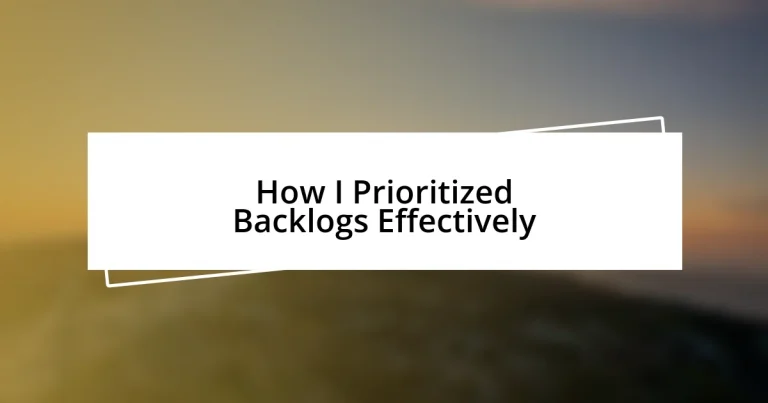Key takeaways:
- Backlog prioritization should focus on aligning tasks with project goals and user value, facilitating regular reassessment through team engagement.
- Utilizing frameworks like the Eisenhower Matrix, MoSCoW method, and RICE scoring can simplify task prioritization and enhance decision-making.
- Continuous monitoring and reflection on outcomes foster a dynamic and accountable workflow, allowing for adjustments that significantly improve user satisfaction and team effectiveness.
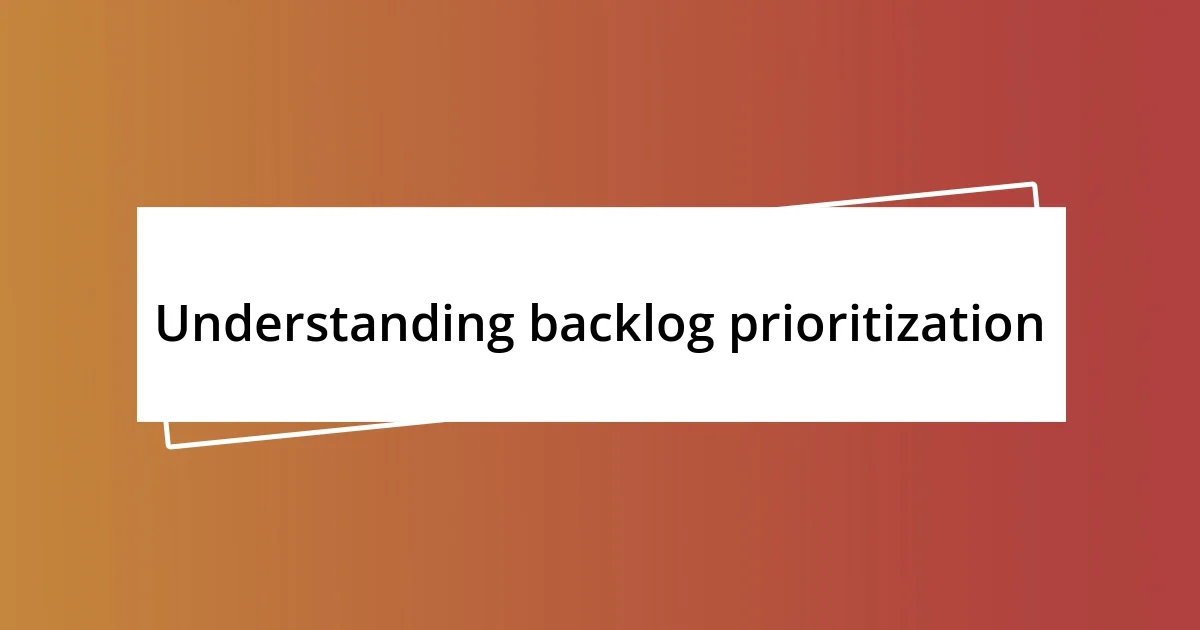
Understanding backlog prioritization
Backlog prioritization is all about aligning tasks with your project goals and team capacity. I remember a time when my backlog felt overwhelming, like a mountain of unread emails. I found that categorizing tasks based on urgency and impact made a significant difference—I could finally breathe again and focus on what truly mattered.
Every team’s unique context shapes their prioritization strategy. There was a project I worked on where stakeholder feedback kept shifting, and it was challenging to stay on course. This experience taught me how crucial it is to engage regularly with your team to reassess priorities; that continuous dialogue ensures everyone is on the same page and can adapt swiftly.
One question I often ask myself is: “Which tasks will provide the most value to our end users?” This perspective helps me prioritize tasks beyond just deadlines or workload. When I focused on user value, it transformed my approach to backlog management, revealing the projects that truly resonate with our audience and drive meaningful results.
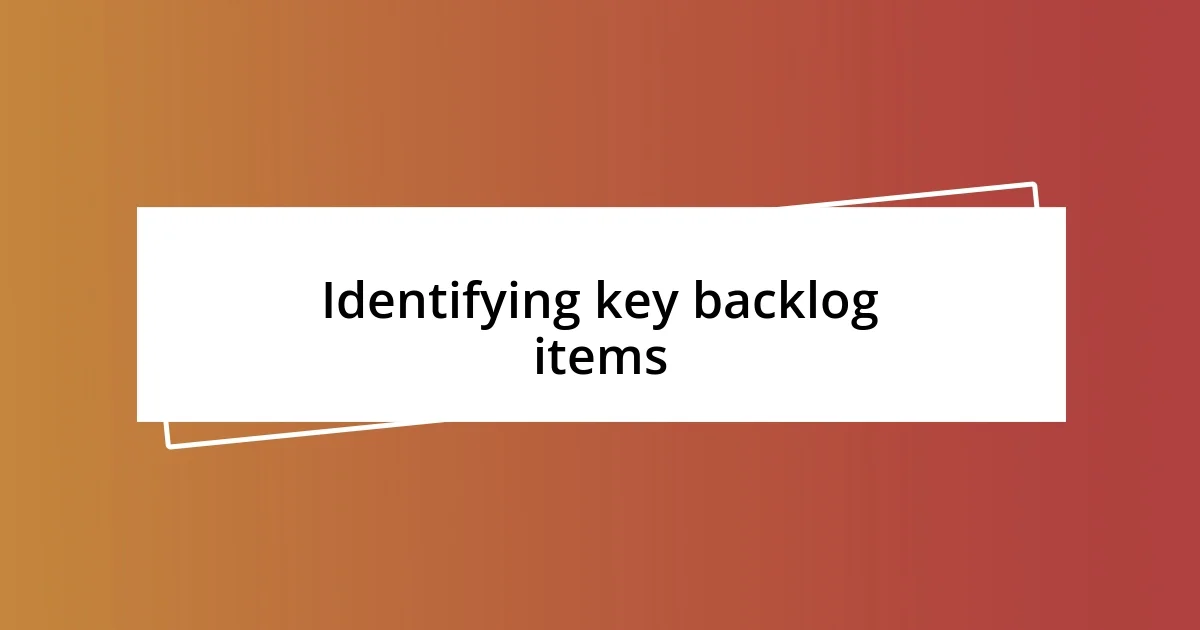
Identifying key backlog items
To identify key backlog items effectively, I find it essential to evaluate each task’s alignment with our overall goals. During a particularly hectic sprint, I grouped tasks not just by their urgency but by their broader impact on our objectives. This deeper analysis often reveals hidden insights—like that one feature I was tempted to prioritize because it was easier to implement, when in reality, it wouldn’t significantly advance our user goals.
Here are some criteria that have guided me in pinpointing key items:
- User Impact: Will this task enhance user experience or solve a critical issue?
- Revenue Generation: Does it have the potential to drive sales or increase engagement?
- Strategic Fit: How well does this task align with our project’s long-term vision?
- Dependencies: Are there tasks that this item enables or completes?
- Team Capacity: Do we have the resources and bandwidth to take this on without sacrificing quality?
Reflecting on these criteria helps cut through the noise, allowing me to focus on what truly benefits the team and our users. I recall a time when re-evaluating backlog items with these angles led to a fantastic breakthrough in our product design—it was like flipping a light switch!
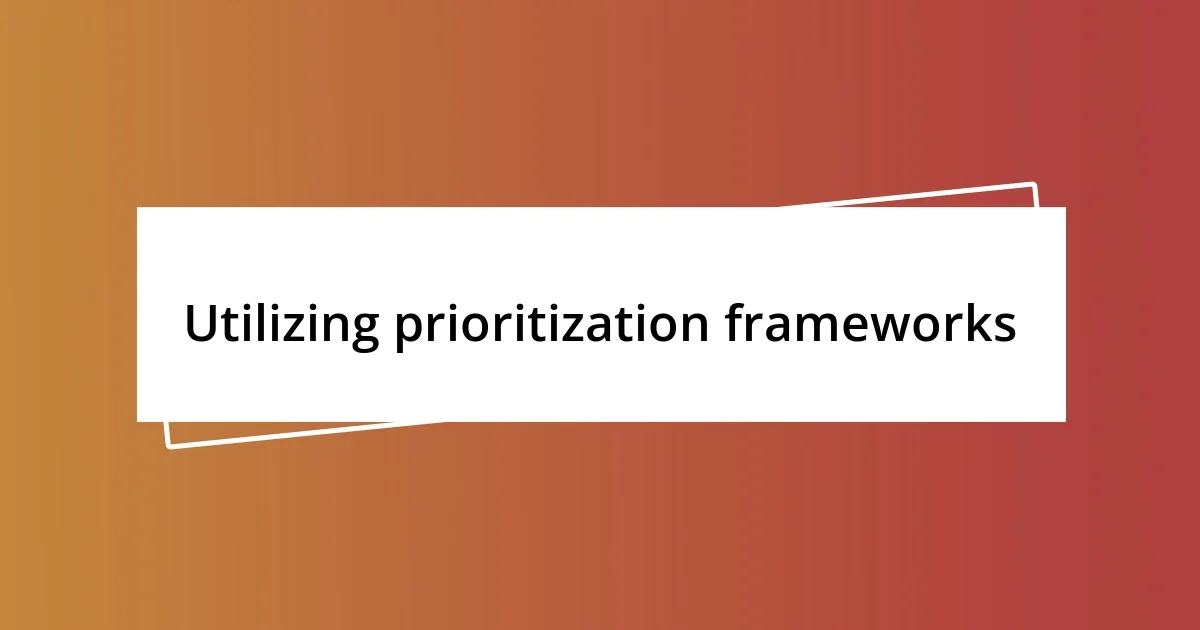
Utilizing prioritization frameworks
Prioritization frameworks can immensely simplify the process of managing a backlog. One that I’ve found particularly helpful is the Eisenhower Matrix, which categorizes tasks into four quadrants based on urgency and importance. Using this framework, I once transformed my chaotic list into a clear visual guide. Suddenly, I could see which tasks demanded my immediate attention and which ones could be scheduled for later, freeing up my mental space.
Another effective framework I’ve employed is the MoSCoW method, where tasks are classified as Must haves, Should haves, Could haves, and Won’t haves. When I first applied this method, it felt like a revelation. I remember detailing a product feature that had initially seemed essential. Yet, by reconsidering its classification, I found it didn’t fit the “Must have” category and could be deprioritized. This not only relieved pressure but also allowed my team to focus on features that motivated our users deeply.
Lastly, utilizing the RICE scoring model—scoring tasks based on Reach, Impact, Confidence, and Effort—has provided a more data-driven approach to prioritization. In one challenging project, I applied RICE to decide which features to include in our next update. I could precisely quantify how each feature would benefit our users versus the effort required. Once I made those decisions, the team was more aligned and motivated, knowing their efforts would lead to significant user satisfaction.
| Framework | Description |
|---|---|
| Eisenhower Matrix | Tasks are grouped by urgency and importance. |
| MoSCoW Method | Classifies tasks into Must haves, Should haves, Could haves, Won’t haves. |
| RICE Scoring | Scores tasks based on Reach, Impact, Confidence, and Effort. |
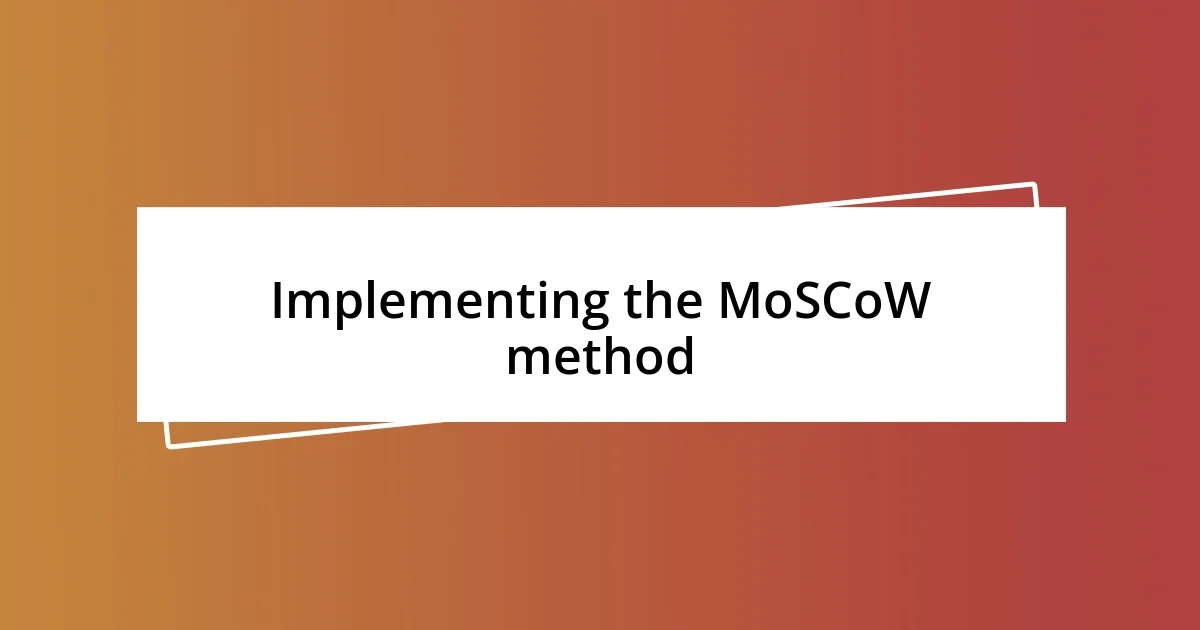
Implementing the MoSCoW method
Implementing the MoSCoW method can truly transform your approach to backlog prioritization. I recall a time when our team was overwhelmed with new feature requests. We sat down together, and as we categorized each item into “Must haves,” “Should haves,” “Could haves,” and “Won’t haves,” I felt a wave of clarity wash over us. It was as if we were sifting through chaos to uncover the gems that genuinely mattered.
When using MoSCoW, I often found that the conversations it sparked were just as valuable as the classifications themselves. For instance, while discussing what constituted a “Must have,” someone brought up an unexpected user need, highlighting how collaborative this process could be. It made me wonder—how many great ideas haven’t made it to the forefront because we skipped the dialogue around prioritization?
Through the MoSCoW method, I also learned the importance of flexibility. Initially, a feature might seem vital, yet with our evolving user feedback, we realized that certain “Should haves” could become “Must haves” or even be discarded. This dynamic re-evaluation not only helps in staying responsive to user needs but also keeps the team energized and focused, preventing burnout from unnecessary tasks. I cherish those moments when we shifted our trajectory based on real data, reinforcing the notion that prioritization is an ongoing conversation rather than a one-time decision.
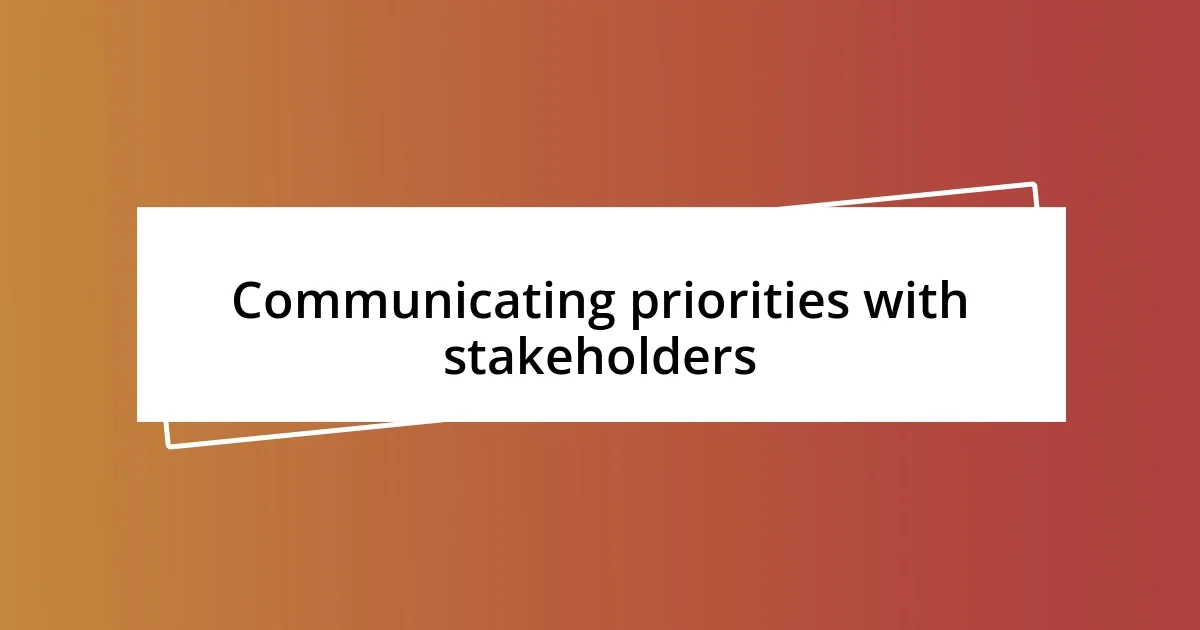
Communicating priorities with stakeholders
When it comes to communicating priorities with stakeholders, clarity is paramount. I remember a particular meeting where I laid out our priorities using a visual presentation. It was remarkably effective. Stakeholders could instantly grasp where our focus lay, making it easier for them to align their expectations. Have you ever experienced a moment when a simple visual can transform understanding?
I also make it a point to encourage open dialogue around priorities. During a recent project, one stakeholder shared their concerns about a specific feature they believed was crucial. By addressing their viewpoint openly, we were able to incorporate valuable feedback that improved our final product. Isn’t it interesting how a simple conversation can unearth insights that elevate our work?
In my experience, regular check-ins with stakeholders enhance transparency. I’ve found that sharing updates on how prioritization evolves keeps everyone on the same page. Just last week, we held a quick catch-up to review which tasks needed the most attention. The sense of collaboration it fostered was palpable. Engaging stakeholders in this manner not only solidifies relationships but empowers them to feel invested in the project’s success.
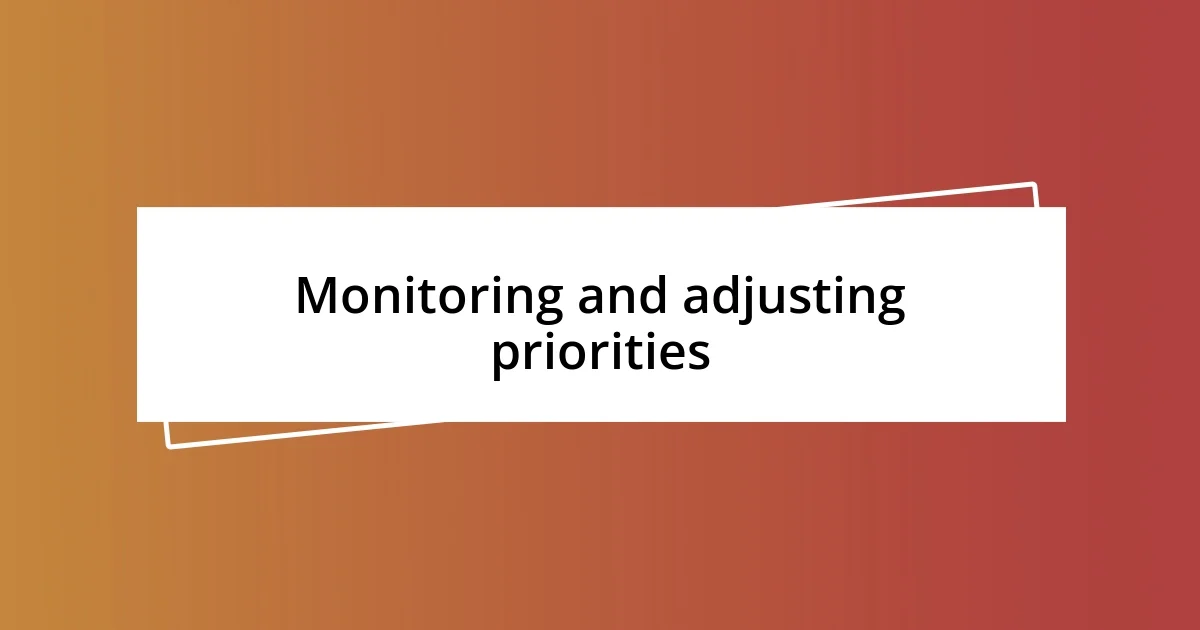
Monitoring and adjusting priorities
Monitoring and adjusting priorities is essential in maintaining a dynamic workflow. I vividly recall a sprint where we realized that a project’s priority had shifted dramatically due to new business insights. It felt almost like a light bulb moment when we acknowledged that what once seemed like a “Must have” was no longer relevant. Have you ever felt that sudden shift in priorities and wondered how best to navigate it?
As we consistently monitored our backlog, I found that even small adjustments could have significant impacts. For instance, during a feedback session, a team member pointed out how a minor feature could enhance user experience more than anticipated. That discussion led us to rethink our priorities and allocate resources accordingly—an adjustment that, in hindsight, saved us from pursuing a less effective path. It’s interesting how these conversations often highlight shifting needs that require immediate attention.
I’ve also learned the importance of timing when it comes to re-evaluating priorities. Just recently, we implemented a bi-weekly review session that allowed us to reflect on our progress and inspect the backlog collectively. I felt a sense of relief knowing we were agile enough to pivot when necessary. Have you ever participated in such reflective practices? They really can sharpen the focus on what matters most, ensuring that my team and I remain aligned with our goals.
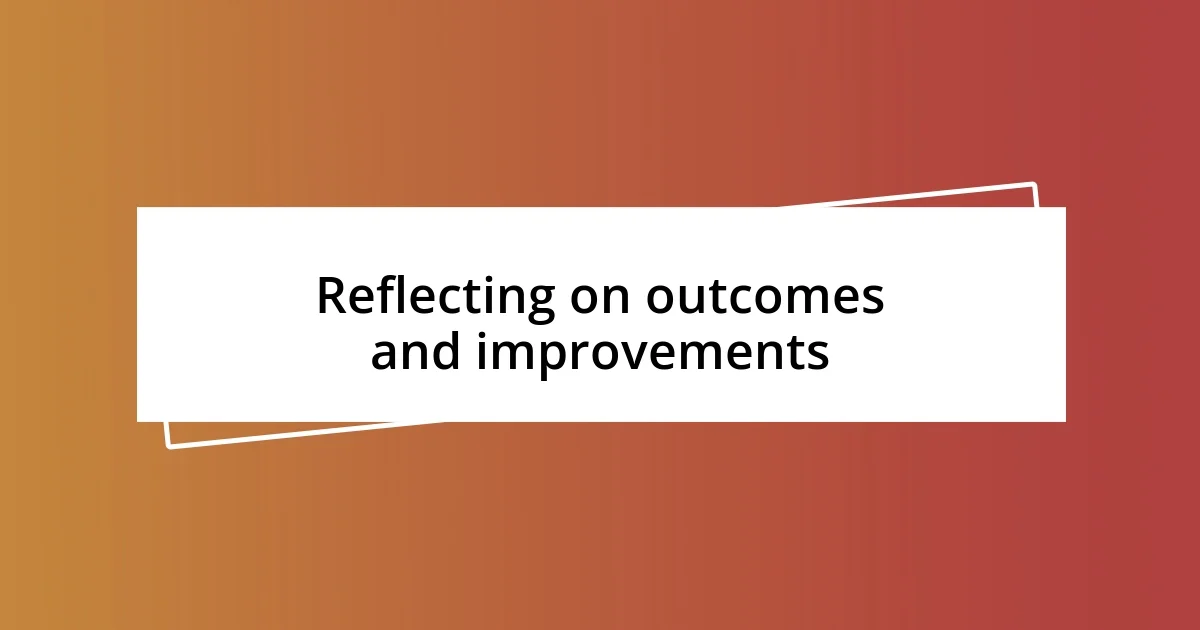
Reflecting on outcomes and improvements
Reflecting on outcomes is a vital step in enhancing our processes. After wrapping up a major project, I conducted a retrospective meeting where the team shared their thoughts on what worked and what didn’t. I recall feeling a mix of excitement and apprehension—sharing our wins was easy, but addressing the shortcomings required vulnerability. Have you ever noticed how acknowledging your team’s challenges can lead to remarkable breakthroughs in future projects?
One memorable outcome from our discussions was realizing the power of documentation. We had previously relied on verbal agreements, but during reflection, it became clear that this led to confusion. I suggested we create a shared document to track our decisions and insights. This improvement not only streamlined our workflow but also fostered a greater sense of accountability among team members. It’s fascinating how simple changes can elevate team performance, isn’t it?
Through these reflections, I’ve learned that continuous improvement is not just a buzzword; it’s a mindset that requires regular nurturing. After every major sprint, I make it a point to revisit our priorities and assess the impact of our decisions. One time, I was surprised to see how a minor adjustment in our backlog had contributed to improved user satisfaction. The feeling of knowing we could make real difference with thoughtful prioritization is incredibly rewarding. Have you ever experienced the joy of seeing your team’s hard work pay off in ways you hadn’t anticipated?












